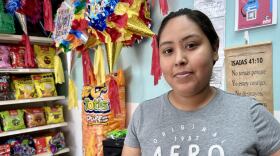Few baby boomers can flip through old photo albums without finding black and white pictures featuring themselves, siblings, and cousins as youngsters. They often show off cowboy hats with stampede strings tied tight under their chins, fuzzy chaps, and belts holding plastic six shooters that fired red ribbons of firecracker-scented caps. Not many escaped that ache to ride the range on a stick horse or to rope sad-faced pups and kittens. Watching Roy Rogers, Gene Autry, and the Lone Ranger on those two-channel TVs fueled dreams and guided neighborhood shootouts. Everyone wanted to grow up to be a cowboy as tough as their favorite Hollywood hero.
Considering that the cowboy archetype is an American invention, I wonder how this life came to be when I think about where our ancestors came from. Folks who left Europe for the new world were typically poor or rising middle class individuals escaping a feudal life style where a very few owned property and many survived as servants and crofters. Many of these arrivals landed with barely more than the shirts on their backs, and those weren’t pearl snap western styles.
One of the dreams this developing country offered, particularly in the West, was either a free homestead paid for through sweat equity or cheap land sold by railroad companies to encourage settlement. Any hard worker who made it to this grand landscape could be become a farmer or a rancher. Once those immigrants managed to claim their acres, magic happened. Some learned to cowboy, acquiring the skills and talk along with necessary clothing for the profession.
Cattle-barons-to-be needed help to drive bovines from one pasture to another or to railheads. That opened a line of work requiring a skillset considerably different from those necessary in the old country. I recently listened to a speaker whose Scottish family immigrated to Wyoming in the 1890s. Handsome young men wearing their best suits with tartan vests arrived in Cheyenne where they discovered they needed to invest in chaps and boots if they were going to earn a living wrangling cattle in sagebrush country.
Our presenter shared photos documenting his family’s growing prosperity. In the beginning, none of those Scotsmen looked at ease astride cow ponies or branding calves. After a year as drovers, all of them could’ve starred as any Larry McMurtry character in the Lonesome Dove series. They had become new world centaurs.
Our region of Kansas saw similar development. Settlers hungry to possess land arrived from Europe. In short time, a goodly number of these “foreigners” learned ranching lingo and found a home astride a horse. They traded kilts for chaps and wooden shoes for cowboy boots. Their legacy lives.
Visit any small town event in northwest Kansas today, and you’ll find a folks with German, French, Dutch, Scot, Irish, and Czech surnames wearing worn, muddy boots. You’ll find them sporting cowboy hats and driving big diesels, towing livestock trailers behind. Go to a ball game, and you’ll spy their pretty daughters wearing fashion jeans shoved into scrolled leather boots and sporting silver buckles. Their sons wear Wranglers tucked inside scruffy Tony Lamas. The shiny gear at their waists is big enough to use to serve eggs and bacon to a family.
These descendants of European immigrants took to life on the open range the way longhorns took to Texas. They are now native to this place.







